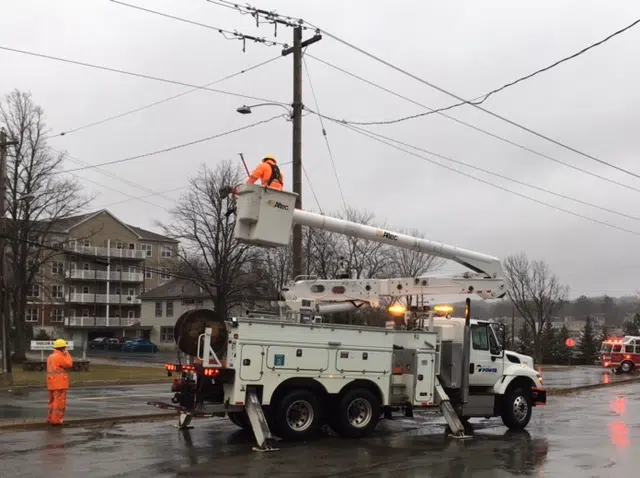Nova Scotia Power has dispatched 300 crews around the province and all of them are based in the Atlantic Bubble.
Normally NS Power would look as far as Ontario for support in anticipation of a big storm however with the COVID-19 pandemic still ongoing that was not a possibility this year.
NS Power’s Cheif Operating Officer Mark Sidebottom says despite that challenge they were able to get what they deem an adequate amount of crews “Approximately 170 of the crews are from out of province but they are all from the bubble.”
Our #HurricaneTeddy preparation has continued today, and we’ve been welcoming crews from within the Atlantic bubble. Our trucks are fueled and we’re ready to respond.
pic.twitter.com/lQcHPgie31
— Nova Scotia Power (@nspowerinc) September 21, 2020
“With rain and wind forecasts anticipated to be above 80 km/h for an extended period of time, we anticipate potentially two separate peaks of the storm, on Tuesday evening and through the day on Wednesday,” says Sidebottom. “Safety is our top priority and we want our customers to know we are ready to respond, as soon as it is safe to do so.”
He says that the crews have been evenly distributed amongst the province but as they get more information about the storm they may be dispatched to more specific locations.
With many households experiencing long power outages as a result of Dorian Sidebottom says they’ve been hard at work to reduce the risk of lines coming down, “Over the past year we’ve invested $20 million in vegetation removal around power lines and that will help lower the risk of outages.”
When conditions are considered safe, restoration by crews will begin working. In situations where there are multiple power outages, NS Power restores power in phases to ensure critical services like hospitals can stay open before beginning work in other areas.
- Phase 1 – Restoration of public safety issues and emergency situations
- Phase 2 – Restoration of NS Power critical infrastructure such as transmission lines and substations
- Phase 3 – Restoration of Emergency Management Office (EMO) critical infrastructure such as hospitals, shelters, and essential provincial and municipal services
- Phase 4 – Restoration of main electrical feeders servicing communities and neighbourhoods
- Phase 5 – Restoration of branch power lines servicing individual streets
- Phase 6 – Restoration of individual homes and businesses
In the event power does go out Sidebottom says that Nova Scotians should utilize the outage map which he touted as very accurate.










